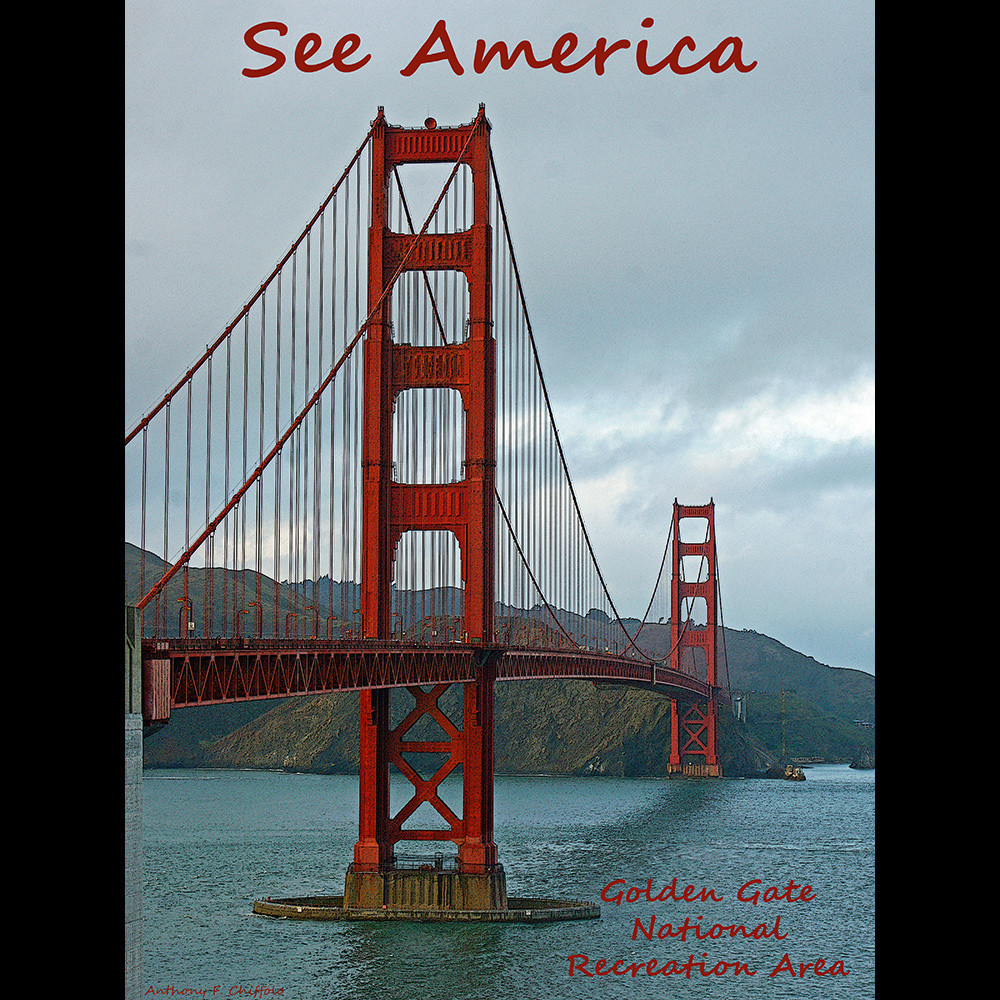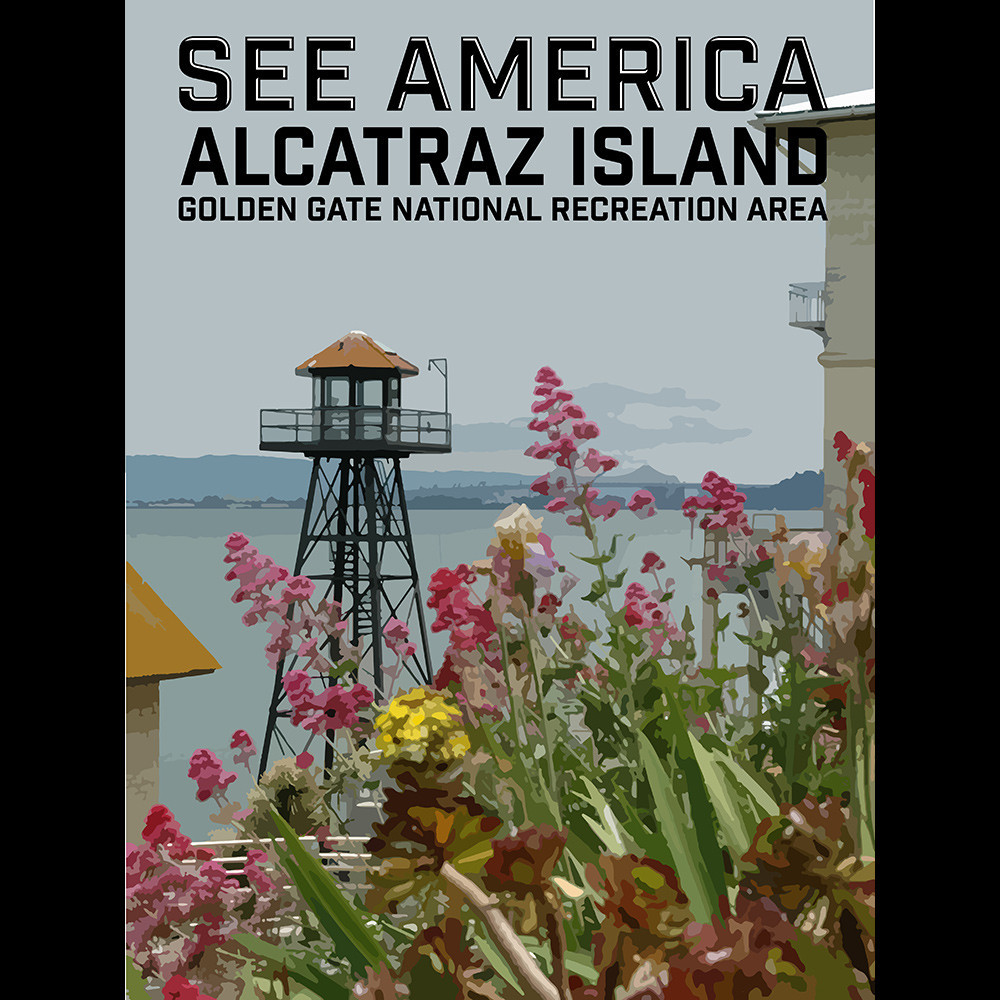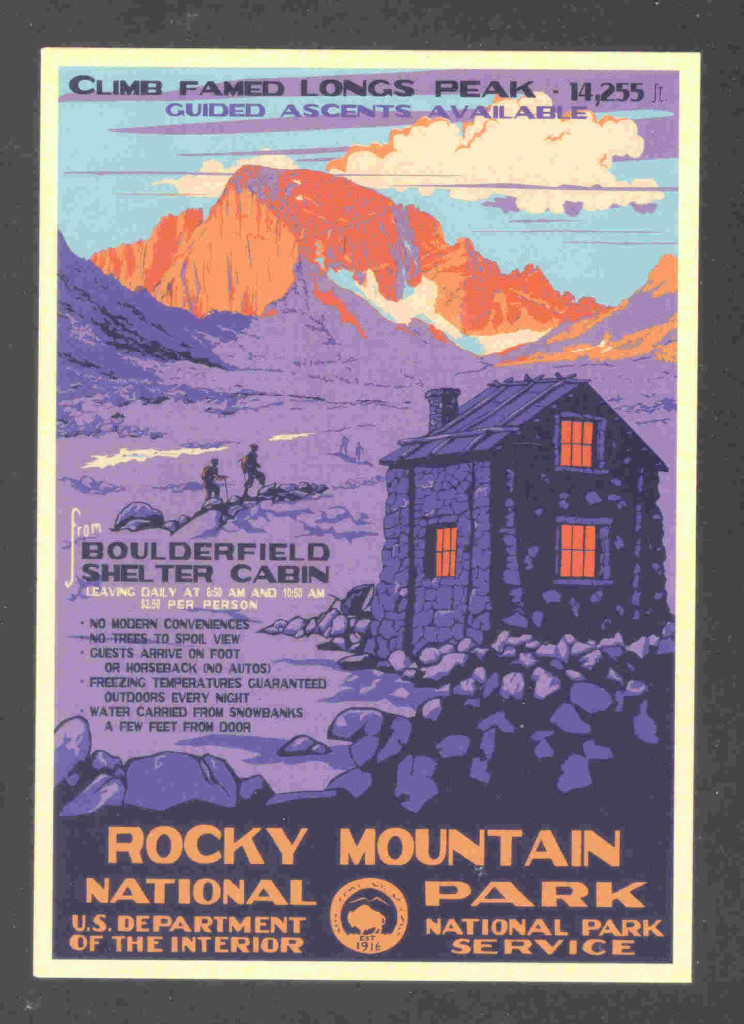Shayna Roosevelt had a clue hanging in her kitchen and she didn’t even know it. The clue was in the form of a poster, an image of silhouetted hikers trekking along purple-hued rocks at the base of Longs Peak, Colorado. She had hung it in the space above her dish-drying rack.
Last year Max Slavkin, the CEO of the Creative Action Network (CAN), called Roosevelt and asked for her help in bringing back one of the projects in her great-grandfather’s Work Projects Administration. He wanted to know what she knew about Franklin Delano Roosevelt’s Federal Art Project, part of the New Deal that employed thousands of artists to create hundreds of thousands of works of art. And he wanted to know if she’d help bring the idea back.
“Oh my God, Max!” Roosevelt remembers yelling over the phone from her living room couch. There was the poster, suddenly an omen of how Roosevelt’s great-granddaughter could add to the family legacy. “I’m staring straight at it!”
Designed by Doug Leen and Brian Maebius, the poster of the trekking hikers is part of a WPA collection dating back to FDR’s Federal Art Project. Of the hundreds of thousands of works from that project, a mere handful became posters used to promote the country’s national parks.
Slavkin’s idea was to partner with the National Parks Conservation Association and, 75 years after the original, launch a new art project, called “See America.” The campaign crowd-sources artwork from all 50 states to revive the WPA posters with a new collection of art celebrating America’s more than 400 national parks.
On the phone, Slavkin offered Roosevelt an invitation she couldn’t refuse: the chance to design one of the posters.

“See America” accepts all artwork that depicts a national park and meets the submission guidelines posted on the CAN website. Slavkin says the project allows America to “look in the mirror back at itself, which is much more valuable than picking one design over another.” The artwork is posted to the website within a few days, and 40 percent of sales go to the original artist.
Slavkin says the goal is to remind Americans of their connection to their country’s great natural areas. The idea has struck a nerve: submissions have exceeded CAN’s goal by 1,000 percent. Slavkin attributes the campaign’s success to its positivity, and to its promotion of natural beauty. “I don’t think people get to celebrate enough,” he says.
See America is modeled on art that’s almost eight decades old, but the subject matter is as relevant as ever. “There is something about this project that feels so pertinent now,” Shayna Roosevelt says. “It’s about collaborative art, and it’s about being informed by your environment and letting that come into play with your artwork.”

There is a strong Roosevelt influence in the Bay Area. There are a couple material artifacts – a Roosevelt plaque in Muir Woods, the Roosevelt yacht in Jack London harbor – but also, tucked into the hills of southeast Oakland, is Franklin Delano Roosevelt’s great-granddaughter.
Shayna Roosevelt is a painter, textile designer, and a former partner at the Room Creative design studio in San Francisco. She was born in Santa Cruz, and though she left at an early age, she eventually found her way back to the Bay.
Roosevelt speaks fondly of her first years as an artist. Sitting in her kitchen below the Rocky Mountain poster that caught her eye during her phone-call with Slavkin, she relives old memories between giggles and squeals from her 6-month old son.
Roosevelt was first inspired to work on collaborative art through a Chicano studies class at UC Davis featuring community murals. The WPA Federal Art Project commissioned hundreds of murals, which is what drew Roosevelt to the class in the first place. Along with speaking events with her father, it was a way to stay connected to the Roosevelt name.
Murals were a sharp contrast to Roosevelt’s other artistic studies. She lived in France for a year, where she enjoyed a wide spectrum of classical artwork. She describes the Chicano studies class, however, as “a whole other side of art.”
“It’s so easy to isolate yourself as an artist,” she says, “but for a mural there are literally dozens of people working together. It’s less about the artist and more about the final project.” Roosevelt says the same could be said of the See America campaign.

Roosevelt describes her backyard as a space that “filters in” to her house. As we talk in her kitchen, slight breezes weave in the back doors and windows from the acre of land around us. Her house sits on slopes studded with trees, twenty-four of which are redwoods. Just after buying the house, Roosevelt and her husband drove to Home Depot and stuffed as many redwood saplings as they could into the trunk of their car. Seven years later, the trees already stand several feet above us.
“Redwoods are near and dear,” Roosevelt says. “Both times I was pregnant, I used to walk in the Redwood Regional Park near my house.”
It was a natural choice, she said, to choose Muir Woods for her See America poster. As she began her piece, she focused a lot of her time on the various textures of the forest. “As a textile designer I’m more involved in patterns,” Roosevelt says, “so I used patterns for the redwood tree bark.”
Roosevelt began the process by sketching, but eventually moved to her computer. Though it seems odd to use 21st century technology to re-imagine art from the 1930s, the style of her computer matched well to the layout of the older prints. “The older processes produce a flat style, which is a lot of what you get digitally,” Roosevelt says.
The piece’s historical connection goes beyond style, however. Roosevelt’s family legacy ties not only in the WPA project’s beginnings, but in those of the Muir Woods National Forest as well.
In 1908 Theodore Roosevelt declared Muir Woods a national monument and named it after the naturalist whose environmental advocacy helped establish America’s National Park system. When Franklin Delano Roosevelt died 37 years later, delegates from 50 countries met in Muir Woods to commemorate him. They left a plaque in his honor, which visitors to Muir Woods can still visit to this day.
“It was such an incredible thing to be able to connect to my family history through something so personal,” Roosevelt says of her artwork, “It feels like I have more of a stake in the Roosevelt legacy now.”

Since See America’s inaugural exhibition at the Franklin D. Roosevelt Presidential Library in Washington, D.C. this January, the See America campaign has been on tour all over the country. Now that CAN has vastly exceeded their submission goals, they have set new goals, one of which is to tour all 50 states.
Although See America features more than 600 works of art, not all of the national parks have been covered. The next milestone for CAN and the National Parks Conservation Association is to have artwork for all 400 of America’s national parks. To join the campaign and submit your artwork, visit the See America website, and check out Bay Nature’s list of national parks in the Bay Area:
California National Historic Trail
Eugene O’Neill National Historic Site
Fort Point National Historic Site
Golden Gate National Recreation Area
John Muir National Historic Site
Juan Bautista de Anza National Historic Trail
Muir Woods National Monument
Pinnacles National Park
Point Reyes National Seashore
Port Chicago Naval Magazine National Memorial
Rosie The Riveter/WWII Home Front National Historical Park
San Francisco Maritime National Historical Park
“We think of the campaign as just getting started,” Slavkin says, “and as we’re approaching the 2016 centennial anniversary of National Parks, we anticipate a lot of energy still to come.”





